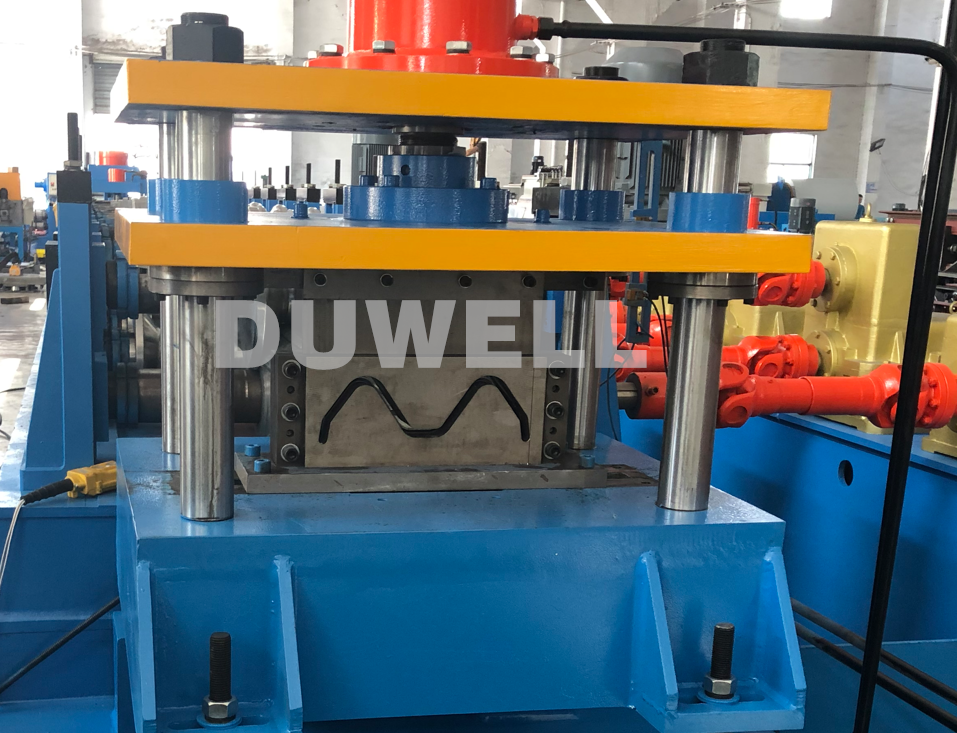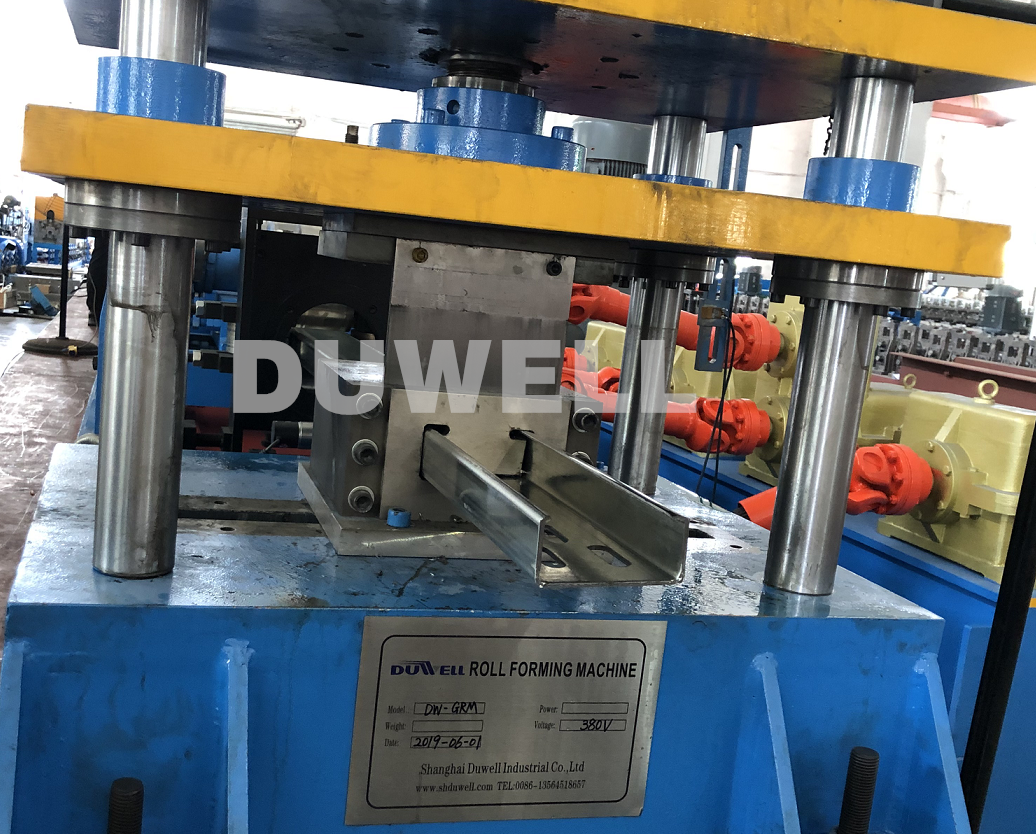A guardrail roll forming machine is a specialized type of roll forming equipment designed to produce metal guardrails, which are commonly used for highway safety, pedestrian barriers, and industrial fencing. These machines are engineered to create long, durable guardrail profiles with precise dimensions and consistent quality. Guardrails are typically made from galvanized steel or other corrosion-resistant materials to withstand harsh environmental conditions.
1. High Production Capacity:
- Designed for mass production of guardrails, making it ideal for large-scale infrastructure projects.
2. Material Compatibility:
- Typically processes galvanized steel or other corrosion-resistant metals to ensure durability and longevity.
3. Precision Forming:
- Produces guardrails with tight tolerances and consistent dimensions, ensuring compliance with safety standards.
4. Customizable Profiles:
- Can be tailored to produce various guardrail designs, such as W-beam, Thrie-beam, or custom profiles.
5. Integrated Cutting and Punching:
- Includes systems for cutting guardrails to length and punching holes for assembly and installation.
6. Automation:
- Often equipped with automated controls for feeding, forming, cutting, and stacking, reducing labor costs and improving efficiency.
First, focus on the precision of the forming process of the machine, which is the primary standard to measure whether the highway guardrail machine is efficient and durable. Ideal forming machine should accurately replicate the design blueprints, ensuring that the size and shape of each piece of guardrail plate conform to the designed model, with nearly zero error. That is, the precision of the equipment is a direct reflection of the manufacturer's advanced level of technological development and design capabilities. Therefore, choosing equipment that employs cutting-edge forming technology is the first step toward high-quality production.
1. Uncoiler:
- Holds and feeds the metal coil into the machine.
2. Leveler:
- Flattens the metal strip to ensure uniformity before forming.
3. Roll Forming Stations:
- A series of rollers that progressively shape the metal into the guardrail profile.
4. Punching Unit:
- Adds holes or slots for bolts and connectors used in guardrail assembly.
5. Cutting System:
- Cuts the guardrails to the required length (e.g., hydraulic shear or flying cutoff).
6. Control Panel:
- Allows operators to adjust settings such as speed, length, and punching patterns.
7. Output Conveyor:
- Transports finished guardrails for stacking or further processing.
- High Efficiency: Capable of producing long lengths of guardrails quickly and consistently.
- Cost-Effective: Reduces material waste and labor costs compared to manual fabrication.
- Durability: Produces guardrails that meet stringent safety and quality standards.
- Flexibility: Can be customized to produce different guardrail profiles and sizes.
- Automation: Minimizes human error and increases production speed.
1. Production Volume:
- Ensure the machine can handle the required production capacity.
2. Material Type:
- Verify that the machine is compatible with the material you plan to use (e.g., galvanized steel).
3. Profile Complexity:
- Choose a machine capable of producing the desired guardrail profile.
4. Maintenance and Support:
- Select a manufacturer that offers reliable after-sales support, including maintenance and spare parts.


